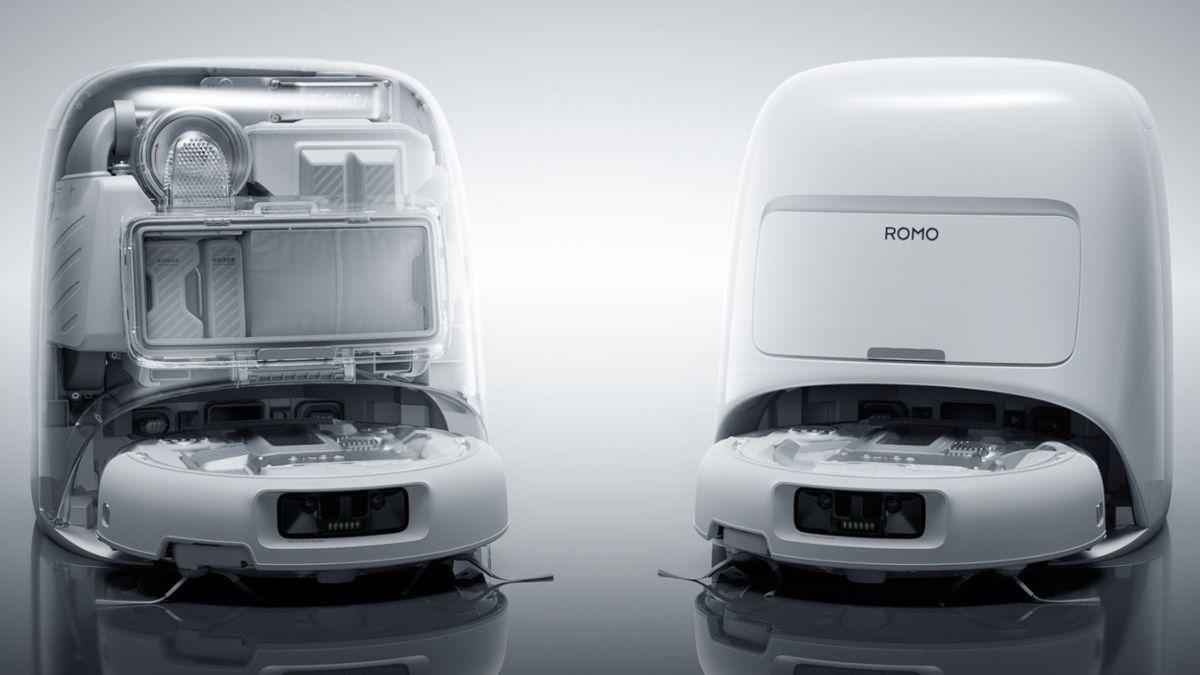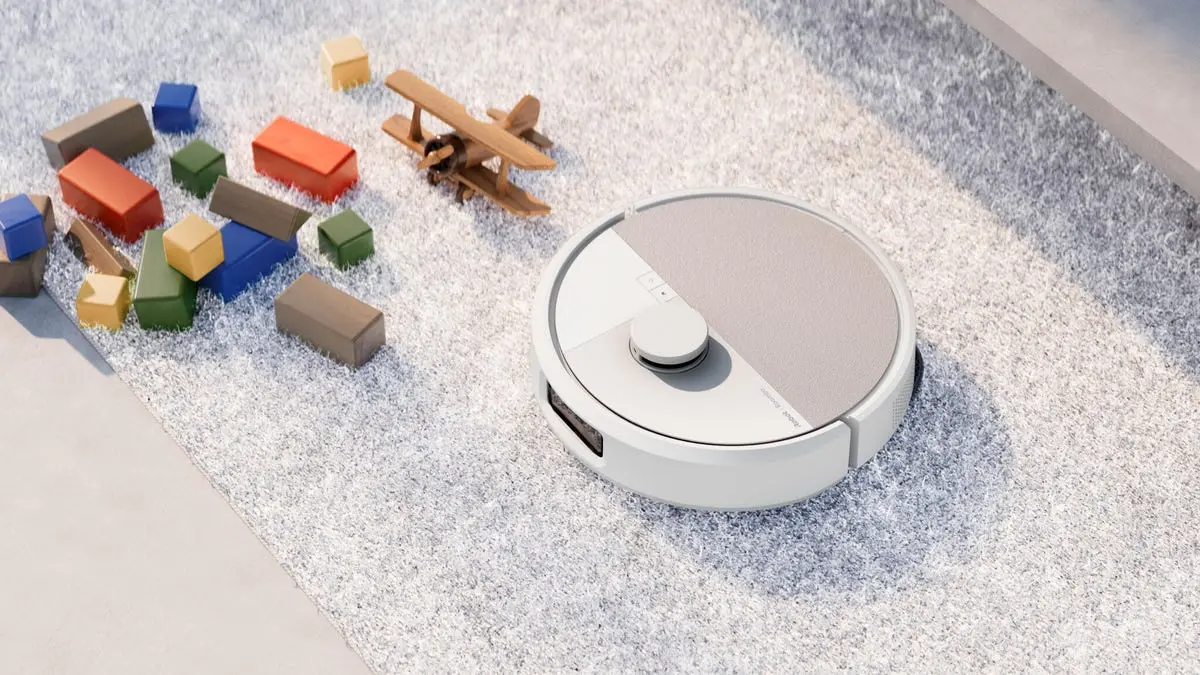DJI Enters Robot Vacuum Market with AI-Powered Romo Series
2 Sources
2 Sources
[1]
DJI goes from drones to dust with launch of new robot vacuum
On the front, the DJI Romo deploys two fisheye cameras for a panoramic view, along with the laser-directed vision system in traditional robovacs. The three self-developed laser modules, along with the binocular vision, ensure objects as thin as 2mm, such as a cord dangling from a table, are not missed. DJI says it uses AI to generate maps of the available surfaces, and the data is stored locally for privacy. The Romo comes with an "extra-large" suction duct with a 25,000 pascals pressure with mechanical arms and scrub pads that can extend out to clean between tight spaces. Although suction pressure isn't a reliable metric for a robovac's performance, we often hear brands aim for higher numbers simply for bragging rights. Meanwhile, DJI doesn't make explicit claims about the area (in square feet or square meters) it can clean over a period of time.
[2]
Forget Roomba -- DJI just swapped drones for robot vacuums with the DJI Romo
The brands behind the best robot vacuums are facing added competition from an unlikely source. DJI, the Chinese company responsible for many of the best drones you can buy, is reportedly launching its first robot vac in China this week. The DJI Robo's August 6 launch date was roundly leaked back in July on X after a leaked photo of the vacuum from behind some glass was posted lasted November. And it looks like the brand's Chinese site has, as anticipated, gone live with all the details. Of course, the big question is whether or not customers in the U.S. or the U.K. will ever actually get a chance to try it. DJI's drones were targeted by bans passed by the US House of Representatives, despite the company itself noting on its official blog that its products are not banned in the U.S. at this time. But even without the ban, the continued uncertainty around high tariff rates likely have the company on the back foot when thinking about launching any new product in the U.S. It's worth pointing out that other top robot vacuum brands like Roborock, Ecovacs, and Dreame are all Chinese and are shipping new products to the U.S. So hopefully we'll see a release date in the future. There's obviously a lot of overlap between drones and robot vacuums when you think about it. Both need reliable cameras and collision-avoidance technology to do their job well. The DJI Romo has a pair of fisheye cameras on the front and a LiDAR system for finding its way around. According to reports, DJI uses AI to generate maps of cleanable surfaces and stores them locally in the vac for privacy. There are three models of the Romo: A, S and P. As far as I can tell from the specs sheet, the only real difference seems to be the outward design. The S has an all-white chassis while the P brings a very Nothing-style transparent look while the A has a white vacuum with a transparent base station. All three models have a 25,000 pascal suction power and a 2.4 liter dust bag capacity. Battery life for all three models is stated at three hours with a 2.5-hour charging time.
Share
Share
Copy Link
DJI, known for drones, launches its first AI-enhanced robot vacuum cleaner, the Romo, featuring advanced vision systems and powerful suction capabilities.
DJI's Surprising Entry into the Robot Vacuum Market
In an unexpected move, DJI, the Chinese company renowned for its high-quality drones, has announced its foray into the robot vacuum cleaner market with the launch of the DJI Romo
1
. This strategic pivot demonstrates the company's versatility and its ability to leverage its expertise in autonomous navigation and imaging technologies across different product categories.
Source: Tom's Guide
Advanced Technology and AI Integration
The DJI Romo boasts an impressive array of cutting-edge features that set it apart from traditional robot vacuums. On the front, it deploys two fisheye cameras for a panoramic view, complemented by a laser-directed vision system
1
. This combination of three self-developed laser modules and binocular vision enables the Romo to detect objects as thin as 2mm, such as cords dangling from tables, ensuring thorough cleaning and obstacle avoidance.One of the standout features of the Romo is its use of AI to generate maps of cleanable surfaces. Importantly, DJI has addressed privacy concerns by storing this data locally on the device
2
. This approach not only enhances the vacuum's efficiency but also provides users with peace of mind regarding their data security.Powerful Cleaning Capabilities
The DJI Romo doesn't just rely on its advanced navigation systems; it also packs a punch when it comes to cleaning power. The vacuum features an "extra-large" suction duct with an impressive 25,000 pascals of pressure
1
. While suction pressure alone isn't a definitive indicator of performance, it's clear that DJI is aiming to compete with established brands in terms of raw power.Additionally, the Romo is equipped with mechanical arms and scrub pads that can extend to clean between tight spaces, addressing one of the common pain points of robot vacuum users
1
.
Source: Android Authority
Related Stories
Product Line and Specifications
DJI has introduced three models of the Romo: A, S, and P. While the core functionality remains consistent across the range, the models differ primarily in their outward design. The S model features an all-white chassis, the P model sports a transparent look reminiscent of Nothing's design language, and the A model combines a white vacuum with a transparent base station
2
.All three models boast impressive specifications, including a 2.4-liter dust bag capacity, a battery life of three hours, and a charging time of 2.5 hours
2
.Market Challenges and International Availability
While the launch of the DJI Romo in China is confirmed, its availability in international markets, particularly the United States and the United Kingdom, remains uncertain. DJI has faced regulatory challenges in the US, with its drones being targeted by bans passed by the US House of Representatives
2
.However, it's worth noting that other Chinese robot vacuum brands like Roborock, Ecovacs, and Dreame continue to ship new products to the US. This precedent offers hope for a potential future release of the DJI Romo in international markets
2
.References
Summarized by
Navi
[1]
Related Stories
iRobot Unveils New Roomba Lineup with Advanced AI and Innovative Features
12 Mar 2025•Technology

Robot Vacuums Get Smarter: CES 2025 Showcases AI-Powered Cleaning Innovations
06 Jan 2025•Technology

Dyson Unveils AI-Powered Spot+Scrub Robot Vacuum: A Leap Forward or Just Catching Up?
05 Sept 2025•Technology

Recent Highlights
1
Google launches Gemini 3 Flash as default AI model, delivering speed with Pro-grade reasoning
Technology

2
OpenAI launches GPT Image 1.5 as AI image generator war with Google intensifies
Technology

3
OpenAI launches ChatGPT app store, opening doors for third-party developers to build AI-powered apps
Technology





